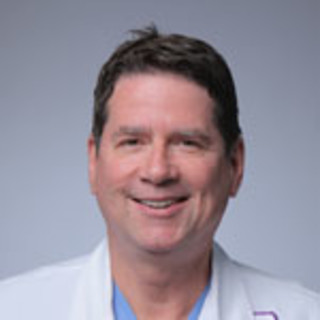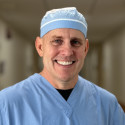The 101st annual meeting of the American Association of Thoracic Surgery (AATS) was recently held on April 30–May 2, 2021. Despite the required virtual nature of the meeting, the original presentations were timely, followed by both debate and discussions from leading experts in the field, as has historically been the tradition. In addition to the presentation of original were also in-depth post-graduate learning programs available in topics ranging from mitral valve repair to endocarditis, aneurysms disease, surgical treatment of arrhythmias, ischemic coronary disease, congenital heart disease, heart and lung transplant, and thoracic oncology.
The Adult Cardiac Plenary Session was held on May 2 and moderated by Dr. Joanna Chickwe of Cedars-Sinai and Dr. Joseph Woo of Stanford University. All of the presentations were excellent, but I will highlight the following studies because of the implications to cardiac surgery-related quality rankings and because of the valuable observations related to specific specialized techniques.
Political: “CABG Public Star Ratings and Program Performance: The Intersection Between Statistics, Perceptions, and Reality” by Ghandour et al. This study demonstrated the lack of correlation between the current STS 1-3 Star Quality Ranking for coronary artery bypass graft surgery (CABG), the CMS CABG Quality ranking and the U.S. News ranking for CABG quality. This disparity is obviously due to the different weights given to different variables that denote quality. The authors noted that the STS 3 Star rating is based primarily on the absence of adverse events, primarily give to mortality. It was suggested that publicly reporting a quality model that overly weights death, when the incidence of death after CABG death is extremely low, leads to either risk aversion by some centers to operate on high-risk patients or risk diversion of high-risk patients to other centers. The implication was that the cardiac surgical community needed to establish a more universally agreed-upon set of quality indicators, noting that the current STS rating system is limited in scope and does not account for many variables known to positively impact long-term patient outcomes, such as survival or freedom from the recurrent symptoms or procedures, completeness of revascularization or the number of arterial grafts per patient; nor does it account for the volume of complex procedures, the number of reoperative procedures done by the center, or the availability of ventricular assist device or ECMO backup. The presenter strongly suggested that significant revisions or perhaps, an overhaul needed to be made to the current STS ranking model. Not surprisingly, this presentation resulted in significant debate and differences of opinion. However, it is clear that any publicly reported quality rating model needs to be validated, and needs to include multiple quality variables that are widely accepted. The results of these rankings have significant implications not only in patients but for the potential relationship between quality and reimbursement used by CMS and private insurers. Dr. Woo closed by noting that the AATS has established a Quality Gateway Task Force to study this issue in more depth. We can be certain that more discussion of this topic will be forthcoming.
Clinical: “Impact of Aortic Valve Effective Height Following Valve-Sparing Root Replacement on Postoperative Insufficiency and Reoperation,” by Kachroo et al. This study from Washington University looked at our early and late outcomes in 177 patients who underwent valve-sparing aortic root replacement between 1995–2020. Sixty percent of these patients had connective tissue disorders, and most had trileaflet valves. There were no perioperative deaths. The preoperative predictors of early postoperative insufficiency of two or more with annular diameter, low effective leaflet height of 11mm or less, and three or greater preoperative aortic insufficiency. The 10-year freedom from reoperation was 88% and the predictors of late reoperation were annular diameter and early post-op insufficiency of three or more. In the discussion by Dr. Tirone, David noted that the influence of annular diameter on the risk of reoperation has now been offset by techniques of root stabilization with the reimplantation technique. Dr. Joseph Bavaria commented that the patients with aortic root aneurysms with trileaflet valves and three or more insufficiency preoperatively have a very high rate of late failure, and only the most experienced surgeons should attempt valve-sparing aortic root replacement in these patients.
Clinical: “Delineating the Optimal Circulatory Arrest Temperature in Aortic Hemi-arch Replacement with Antegrade Cerebral Perfusion Strategy: An Analysis of the Society of Thoracic Surgeons National Database,” by Seese et al. This study analyzed outcomes in 3,898 patients from 374 centers in the STS database who underwent elective hemi-arch replacement with antegrade cerebral perfusion between 2010. Most patients had a concomitant aorta valve replacement, plus multiple other concomitant procedures. The nadir temperature ranged from less than 20 C to greater than 27 C with a mean of 24.9 C. The median circulatory arrest time was 19 minutes. The results demonstrated that patients cooled to less than 22 C had more bleeding, a longer postoperative ventilation time, a higher incidence of neurologic injury, and higher mortality. Patients cooled to 25–27 Celsius had the best survival benefit and the best composite score outcome, with the optimal temperature for patients going elective hemi-arch replacement with antegrade cerebral perfusion being 27 C.
Social Responsibility and Aspirational: The highlight of the 101st AATS Meeting the Presidential Plenary Session on Saturday, May 1.
The initial section was a telling and insightful “Discussion with Condoleezza Rice,” where she skillfully communicated her wisdom and her observations on leadership. This was followed by the Presidential Address, by AATS President Marc Moon, M.D., entitled, “Is This An Adventure?” While in a virtual environment, the setting was surprisingly intimate, live from an auditorium at Washington University in St. Louis, surrounded by fellow faculty, residents, and his family. In his address, delivered confidently and understated but firmly, Dr. Moon delivered the right message at the right time for the members of the AATS and guests. He effectively challenged the organization and its members to take responsibility for change, to “commit to action,” and to be “committed to long-term change” that will lead to achieving “diversity, equity, and inclusion” in cardiothoracic surgery. He then outlined concrete steps to do so. Undoubtedly one of the most inspiring presidential addresses I have seen in the last 20 years, and I would advise those who missed it to go to the AATS home page and view it online. It was not just a message for the AATS but for residency program directors, educators, and practicing cardiothoracic surgeons worldwide. Congratulations, President Moon.
Illustration by April Brust







